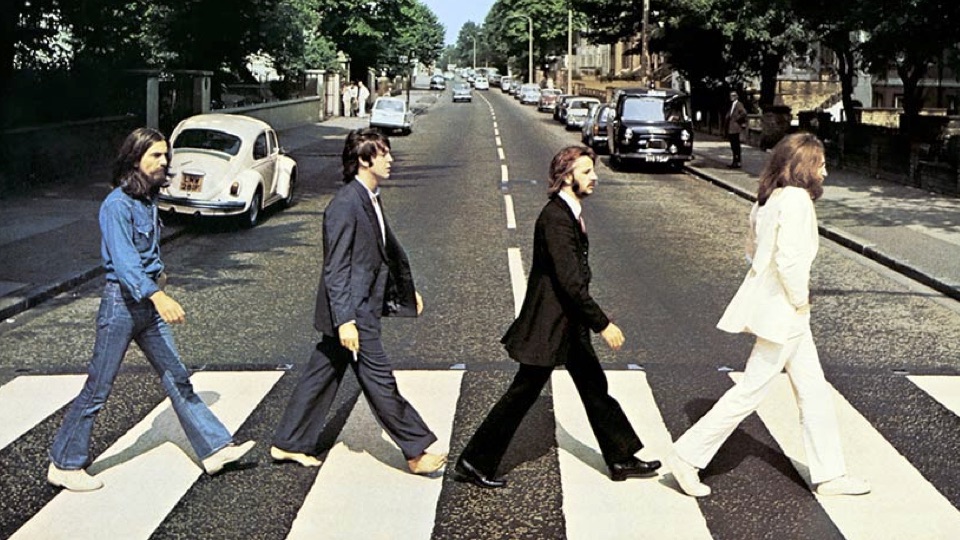The Golden Anniversary of The Beatles’ Abbey Road is upon us. And the album, the band and the producer who made it flesh are deservedly being lauded. It’s amazing to reflect on the fact that this final studio offering of a miraculous group (along with their iconic illustrative strut across Abbey Road) took place 50 years ago. It remains one of the most revered LPs of all time. Part eclectic single tracks, part rock opera, part in-studio technical innovations, and all brilliance.
Kenneth Womack, Beatle historian and prolific music author has written the definitive book on how Abbey Road came to be, and how The Beatles struggled to put aside their differences in order to make the album that would be their studio swan song. The stakes were high. And they (along with their producer and engineers) delivered beyond anyone’s expectations.
Womack’s research is astoundingly thorough. While there can be no doubt that all Fab Four lore has been well-studied, documented and archived, he brings a fresh (yet accessible) scholarliness and technical knowledge to his work.
Solid State is, at its core, the story of a band’s inability to stay together despite their unique and glorious chemistry. It is also a tale of the technological triumphs and inspired studio intervention that embellished their baseline brilliance.
Related: “The Beatles, Beethoven, and ‘Because'”
The human aspects remain fascinating. The Beatles were all agitated and ready to move on to other frontiers. Paul was in love with Linda and planning a life with her. George was weary of his songwriting efforts getting short shrift and wanted to go solo. Ringo remained a stoic worker among workers. And John was fragmenting. His heroin addiction shut down his creative process for a time and his love for Yoko Ono shifted his passions elsewhere. A persistent image of Yoko in the studio, lolling in an installed bed and secretly conferring with John was a squirmy snapshot of a group paradigm gone wrong.
The “solid state” of the title alludes to the state-of-the-art equipment that was finally made available to the band in the EMI Studios: an enormous, multi-dialed mixing surface that we would refer to as an “eight track” today. It allowed for even more control over the amazing raw material. The layering of harmonies, impactful distortion, speeding up or slowing down of vocals and mixing in whimsical bits of chat and sound effects (among many other techniques) gave Abbey Road a far more sophisticated sound.
Related: “Video: Ken Womack and Scott Freiman Talk George Martin”
Minimal spoilage ahead: the hallucinogenic “Come Together” was an actual coming together for a battling, beleaguered band. The second side was inspired by the new “rock opera” model exemplified by The Who’s classic, Tommy. “Polythene Pam” was a salacious filler track with a slew of oddball interpretations. “Maxwell’s Silver Hammer” was part karma metaphor, part cartoony murderous imagery. Paul McCartney infused the end of “The End” with a Shakespearean touch. Honky-tonk player pianos and Moog synthesizers found their way into the tracks, part of their endless quest for musical expansion.
Solid State: The Story of Abbey Road and the End of The Beatles is a timely jewel of a book that lays out their final studio album with a gratifying fullness. Devoted fans will find much to learn; newbies will come to embrace the world’s most exalted rock band.
-Ellen Fagan




0 comments on “Ken Womack’s “Solid State: The Story of ‘Abbey Road’ and the End of The Beatles””